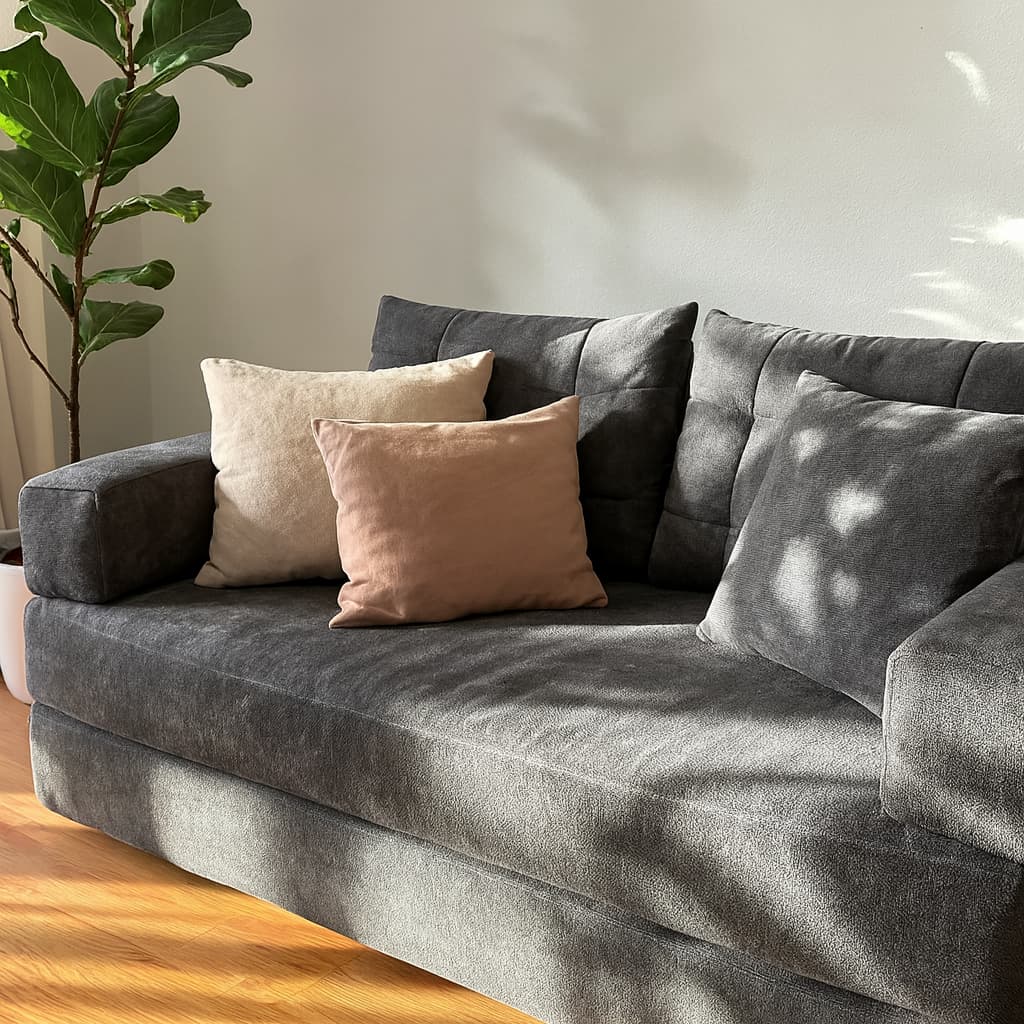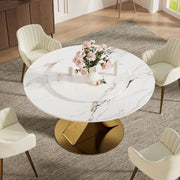
Should You Choose A Sofa Bed?
- Tabitha Crawley
- 2025
When choosing living room furniture that balances style, comfort, and practicality, a sofa bed often stands out as a smart option. It promises two functions in one — a cozy sofa by day and a convenient bed by night.
But is it really the right choice for you? In this guide, we’ll help you understand what a sofa bed truly is, when it makes sense to buy one, and how to pick the right model for your home.
What Is a Sofa Bed (and How It Differs)
When space is limited or versatility matters, a sofa bed becomes an elegant solution — a single piece of furniture that functions both as a sofa and a bed. But not all sofa beds are the same, and the term often causes confusion.
According to Homes & Gardens, a sleeper sofa refers specifically to models that include a pull-out frame and a built-in mattress concealed beneath the seat cushions. In contrast, a sofa bed in the broader sense may use its existing seat and back cushions to form the sleeping surface once folded down.
Put simply: every sleeper sofa is a sofa bed, but not every sofa bed is a sleeper sofa.
Main Types of Sofa Beds
To help you understand your options, here are the most common types — each with its own comfort level, mechanism, and ideal use scenario.
1. Pull-out Sofa Bed (Sleeper Sofa)
This classic design hides a metal or wooden frame and a separate mattress under the cushions. When pulled out, it creates a flat, bed-like surface similar to a standard bed.
It’s the best option for frequent guests or for anyone who values real mattress comfort. However, it requires more space to extend fully and tends to be heavier.
2. Fold-down / Click-clack Sofa Bed
Here, the backrest folds down or clicks flat to create the sleeping surface — the seat and back cushions themselves form the bed.
This style is lightweight, quick to convert, and ideal for small apartments or occasional overnight stays. While it saves space, it typically feels firmer and less bed-like than a pull-out design.
3. Sectional Sofa Bed (Modular Sofa)
A modular or L-shaped sectional with a built-in sleeper mechanism or a chaise that can be rearranged for sleeping. Some models hide storage space for bedding or pillows.
This type combines family seating comfort with guest functionality, perfect for larger living rooms or flexible layouts.
4. Sleeper Chair / Twin Sofa Bed
A compact single-seat version that unfolds into a twin-size bed. It’s great for children’s rooms, home offices, or any multi-purpose space needing an occasional sleep solution.
Note: Some pieces like daybeds or trundle beds also serve a dual purpose — sofa by day, bed by night — but technically, they belong to a different category of convertible furniture.
When Does a Sofa Bed Make Sense?

Modern homes increasingly demand flexibility. A sofa bed is ideal for those who need to optimize limited space or accommodate guests occasionally without dedicating an entire room to them.
You should consider a sofa bed if you:
-
Live in a small apartment or studio, where every piece of furniture needs to serve multiple purposes.
-
Want a guest bed for friends or family who visit occasionally.
-
Have a multi-use room, such as a home office that doubles as a guest space.
-
Are furnishing a vacation rental, where versatile and low-maintenance furniture is essential.
Essentially, sofa beds are for people who value smart furniture solutions — pieces that can adapt as their living needs change.
Key Considerations Before You Buy
Once you’ve decided a sofa bed might suit your lifestyle, it’s time to narrow down your choices. Selecting the right model involves more than just aesthetics — comfort, mechanism quality, and durability all play a role in your daily experience.
1. Space and Layout
Before buying, measure your space carefully — not just the sofa’s footprint, but also how far it extends when unfolded.
Ensure that doors can still open, walkways remain clear, and other furniture isn’t blocked. The Spruce emphasizes that good planning avoids awkward room arrangements or return hassles after delivery.
Tip: If you live in a small apartment, prioritize a click-clack or fold-down sofa bed for easier setup. Larger rooms can accommodate pull-out sleepers with a full mattress.
2. Comfort and Mechanism
Comfort in a sofa bed depends on two key factors — the sleep surface quality and the conversion mechanism.
For models that use the seat and back cushions as the sleep surface, look for dense, supportive foam that retains shape over time.
If you’re choosing a sleeper-style sofa bed with a built-in mattress, materials such as memory foam or hybrid layers tend to provide better body support and consistency for overnight use.
Equally important is the mechanism itself — the part that lets you convert from sofa to bed.
A reliable design should open and close smoothly, without stiffness, squeaks, or excessive effort. When possible, test the conversion in person.
A solid frame and well-built hinge ensure both comfort and durability for years to come.
3. Style and Materials
Your sofa bed should feel like part of your home’s aesthetic — not a compromise.
Choose colors, fabrics, and silhouettes that complement your interior style.
Performance fabrics such as microfiber or tightly woven polyester blends are durable, stain-resistant, and easy to clean — perfect for family homes or rentals.
If you want a more luxurious look, consider linen-blend or textured boucle fabrics, but make sure they suit your maintenance habits.
4. Budget and Durability
Sofa beds range widely in price, depending on mechanism type, frame material, and fabric.
-
Entry-level models (click-clack or futon-style) are affordable and easy to move, but best for occasional use.
-
Mid-range and premium pull-out sleepers feature better mechanisms and longer-lasting frames, making them ideal for regular use.
Check for solid wood or reinforced metal frames — they’re more stable and will handle years of folding and unfolding without sagging.
Avoid cheap particleboard structures that can warp or loosen over time.
Finally, consider warranty coverage on both frame and mechanism; longer warranties often indicate greater manufacturer confidence.
Pros & Cons of Choosing a Sofa Bed
Advantages
➕ Multifunctional convenience – The most obvious advantage is versatility. A sofa bed serves two purposes — a stylish sofa by day and a comfortable sleeping area by night. This makes it ideal for compact homes, guest rooms, or multi-purpose spaces.
➕ Perfect for small homes – In urban apartments or studio layouts, where every inch matters, a sofa bed maximizes usability. You don’t need to dedicate a whole room to a bed that’s rarely used — it’s there when you need it and discreet when you don’t.
➕ Guest-ready flexibility – A sofa bed is a lifesaver when you have friends or family staying overnight. It lets you offer them a proper sleeping spot without scrambling for an air mattress or sacrificing your own bed.
➕ Modern Design Options – Forget the bulky, old-fashioned futons. Today’s sofa beds come in sleek designs, premium upholstery, and a variety of colors — many are nearly indistinguishable from regular sofas.
Disadvantages
➖ Sleeping comfort – Even the best sofa beds may not match the support and comfort of a full mattress. Models that use seat cushions as the sleep surface tend to be firmer or thinner, which can affect sleep quality if used daily.
➖ Mechanism maintenance – The folding mechanism and hinges may require occasional lubrication or tightening over time. Lower-quality models are more prone to squeaks, stiffness, or uneven surfaces.
➖ Heavy structure – Sofa beds are heavier and more complex to move compared to standard sofas. The pull-out types, in particular, can be cumbersome during delivery or rearrangement.
In short, sofa beds are a brilliant compromise — but not a perfect substitute for a dedicated bed or deep-seated couch. If you choose one, prioritize quality and comfort over price.
So, Is a Sofa Bed Right For YOU? (A Decision Checklist)
Let’s turn those pros and cons into practical decision-making scenarios.
✔️ YES, if you:
-
Live in a small apartment, studio, or dorm where space is limited.
-
Frequently host overnight guests but don’t have a dedicated guest room.
-
Want multi-functional furniture that adapts to changing needs (e.g., home office or den).
-
Appreciate modern, practical design that combines form and function.
-
Are furnishing a vacation rental or Airbnb, where flexible sleeping arrangements add value.
❌ NO, if you:
-
Need a primary bed for everyday sleeping (unless you invest in a premium sleeper sofa).
-
Prefer the deep, plush comfort of a traditional sectional sofa for long lounging sessions.
-
Move frequently or live upstairs with narrow doorways (sofa beds can be bulky and heavy).
How to Choose the Right Sofa Bed
Now that you’ve determined it’s right for you, here’s a step-by-step approach to picking the perfect sofa bed.
1. Measure Your Space (Twice!)
Always double-check measurements — both in the sofa position and fully extended. Leave enough clearance to walk around it easily and ensure it doesn’t block doors or furniture.
2. Understand the Mechanism
Mechanism type determines both comfort and ease of use:
-
Pull-out (sleeper-style): Features a metal frame and separate mattress. Ideal for frequent overnight guests or daily sleeping.
-
Click-clack / Fold-down: The backrest folds flat to form the bed surface. Best for occasional use and small spaces.
Test the mechanism in person if possible — it should operate smoothly, quietly, and without excessive effort. A well-built frame and hinges ensure long-term durability.
3. Prioritize the Sleep Surface
-
For sleeper sofas with a built-in mattress: Choose memory foam or hybrid mattresses for proper support. Avoid thin, low-density options that compress quickly.
-
For cushion-based sofa beds: Look for dense foam or high-quality cushions that maintain shape and provide a comfortable night’s sleep.
4. Check the Frame and Upholstery
-
Frame: Solid wood or reinforced steel is best for stability and longevity. Avoid particleboard or low-quality frames.
-
Upholstery: Performance fabrics like microfiber or woven blends balance durability, comfort, and easy maintenance. Removable covers are a bonus.
-
Consider both aesthetic and functional needs: your sofa bed should complement your living space while standing up to daily use.
5. Balance Budget and Longevity
High-quality mechanisms and frames justify a higher price, while cheaper models may suffice for occasional use. Decide what matters more: daily comfort, long-term durability, or budget-friendly flexibility.
6. Final Checklist Before Buying
-
Have you measured the space in both sofa and bed mode? ✅
-
Have you tested the mechanism for smooth operation? ✅
-
Does the sleep surface meet your comfort needs? ✅
-
Is the frame sturdy and upholstery durable? ✅
-
Does the price align with expected usage and quality? ✅
If you can answer “yes” to all, you’re ready to choose the sofa bed that fits your home perfectly.
Conclusion
Choosing a sofa bed is about finding the balance between comfort, design, and practicality. If your living space needs to serve multiple purposes — like hosting guests or doubling as a home office — a sofa bed is an excellent, space-saving solution.
However, if you’re seeking a primary bed for daily use, or crave the deep plushness of a traditional sofa, you may want to consider alternatives like a sleeper sofa or a modular sectional.
Ultimately, the right sofa bed combines thoughtful design, smooth functionality, and reliable comfort — turning a compact space into a truly flexible home environment.

